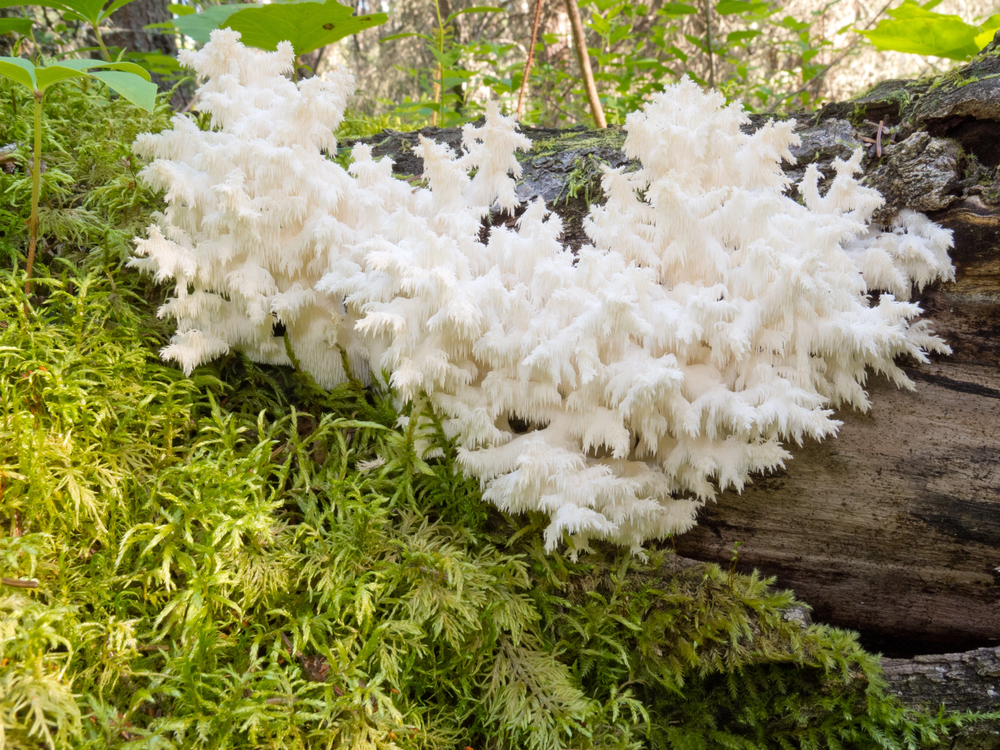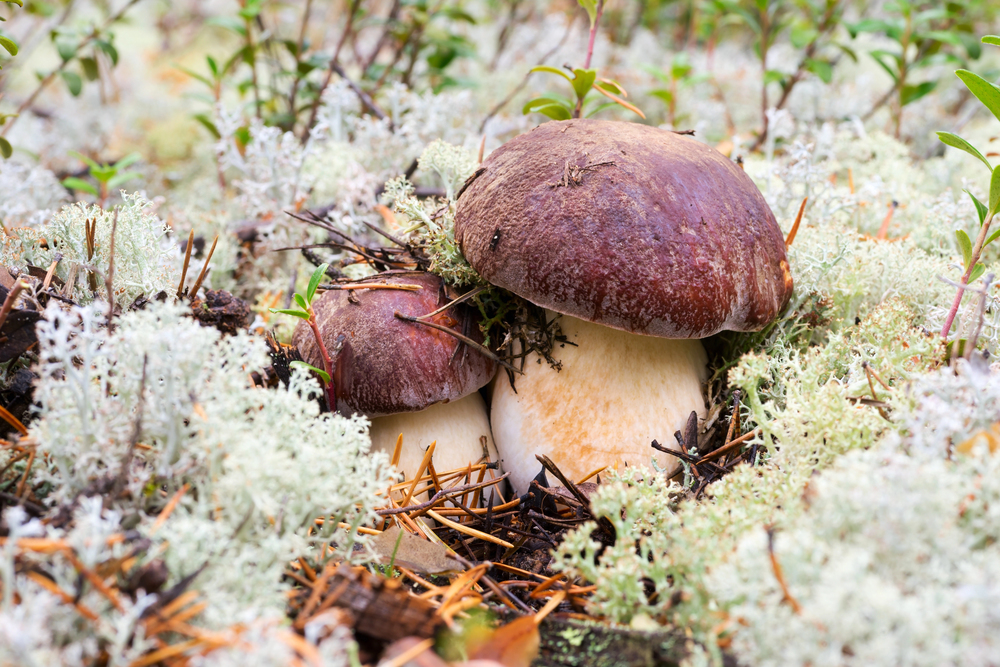Properly storing foraged mushrooms is essential to maintain their quality and flavor. Unlike most produce, mushrooms require specific conditions for storage to prevent spoilage.
To preserve their delicate nature, follow these key tips:
- Store them in a paper bag in the refrigerator.
- Avoid washing them until ready to use.
- Consume them within a few days for the best taste and freshness.
Choosing the Right Storage Container
Choosing the right storage container is important for preserving the freshness of foraged mushrooms. Opt for a container that allows airflow to prevent moisture buildup, such as a breathable paper bag or a loosely covered container lined with a paper towel. Avoid plastic bags or airtight containers, as they can trap moisture and cause deterioration.
Don’t wash mushrooms before storage, as excess moisture promotes mold growth. Keep mushrooms dry and cool to prolong their shelf life.
Cleaning the Foraged Mushrooms
To ensure the freshness and cleanliness of your foraged mushrooms, gently brush off any dirt or debris using a soft brush or cloth.
Inspect each mushroom for spoilage, mold, or insects, discarding any compromised ones.
If needed, lightly rinse the mushrooms under cold water, avoiding soaking to prevent excess water absorption.
Pat them dry with a paper towel or kitchen towel to remove moisture before storing.
Drying Techniques for Long-Term Storage
For long-term storage, effectively utilize drying techniques for your foraged mushrooms. Clean them gently without soaking, slice thinly and evenly for uniform drying.
Air dry on a rack in a well-ventilated area or use a dehydrator at around 120°F (49°C). Check periodically until mushrooms are completely dry and brittle.
Store in airtight containers in a cool, dark place. To use, rehydrate by soaking in warm water or adding directly to dishes for added flavor.
Proper Refrigeration Methods
For optimal preservation, mushrooms should be stored in a refrigerator set at a temperature between 32-36°F (0-2°C). This range helps slow down the natural decomposition process and extends the shelf life of the mushrooms.
Choosing the right storage container is also important. Mushrooms should be placed in a paper bag or a breathable container to prevent moisture buildup, which can lead to spoilage.
Properly stored mushrooms can last for up to a or even longer, depending on the variety. Regularly check for any signs of spoilage, such as sliminess or discoloration, and discard any mushrooms that show these characteristics.
Temperature Control Tips
To keep foraged mushrooms fresh longer in the refrigerator, maintain a consistent temperature between 32-38°F (0-3°C). Avoid fluctuations by keeping the door closed to prevent humidity buildup.
Store mushrooms separately from ethylene-producing fruits to prevent quick ripening.
Storage Container Choice
For optimal storage of foraged mushrooms in the refrigerator, use airtight containers like glass jars or plastic containers with tight-sealing lids. This helps maintain freshness by creating a controlled environment that slows down deterioration.
Ensure containers are clean and dry to prevent mold growth. Avoid using paper bags or open containers as they can lead to moisture loss or excess humidity, causing spoilage.
Proper storage in airtight containers can extend the shelf life of foraged mushrooms and preserve their flavor and texture.
Freezing Foraged Mushrooms
To preserve the freshness of foraged mushrooms, clean and slice them before freezing.
Blanch them in boiling water briefly, then transfer to an ice bath.
Pack the mushrooms into airtight containers or freezer bags, removing excess air to prevent freezer burn.
Label containers with the date for freshness tracking.
Pickling and Preserving Options
Pickling, freezing, and drying are all effective methods for preserving foraged mushrooms.
Pickling extends shelf life, freezing maintains freshness, and drying is ideal for long-term storage.
Pickling for Longevity
For longer shelf life and enhanced flavor, pickle your foraged mushrooms.
Wash them thoroughly and use high-quality vinegar like white wine or apple cider.
Add herbs and spices like thyme, rosemary, peppercorns, and coriander seeds for a delicious tangy and savory profile.
Freezing for Freshness
To preserve the peak freshness of foraged mushrooms, consider freezing them. Clean and slice the mushrooms, then spread them in a single layer on a baking sheet to freeze until firm.
Transfer the frozen mushrooms to airtight containers or freezer bags, removing air before sealing. Frozen mushrooms can last for several months, maintaining their flavor and texture for future use.
Drying for Storage
To effectively dry foraged mushrooms for extended storage, follow these steps:
- Ensure the mushrooms are sliced evenly to promote even drying.
- Use a dehydrator set at around 135°F (57°C) for faster drying and best flavor retention.
- Store the dried mushrooms in airtight containers in a cool, dry place away from direct sunlight to maintain quality.
Using a Dehydrator for Preservation
Dehydrators are great for preserving foraged mushrooms by removing moisture to extend shelf life.
Clean and slice mushrooms evenly, then place them in a single layer on dehydrator trays without touching.
Set the dehydrator to 115°F to 135°F (46°C to 57°C) and dry mushrooms until crisp.
Cool completely before storing in an airtight container in a cool, dry place.
Rehydrate by soaking in hot water for 20-30 minutes before using in dishes like soups, stews, and sauces.
Avoiding Moisture Build-Up
To prevent moisture build-up when storing foraged mushrooms, thoroughly dry them before storing in airtight containers.
Ensure proper ventilation, keep away from direct sunlight, and maintain dryness to preserve freshness.
Dry Mushrooms Thoroughly
After foraging mushrooms, ensure they’re thoroughly dried to prevent moisture build-up. Opt for a well-ventilated area with good air circulation. Spread the mushrooms in a single layer on a clean towel or drying rack for even drying.
Remember these key tips:
- Avoid overcrowding to allow proper air circulation.
- Ensure the mushrooms are completely dry to the touch to prevent mold growth.
- Be patient and let the mushrooms air dry naturally to avoid spoilage.
Use Airtight Containers
To maintain the freshness of foraged mushrooms, use airtight containers to prevent humidity build-up. These containers create a sealed environment that blocks excess moisture, which can lead to mold growth and spoilage.
Ensure the containers are dry before storing the mushrooms to avoid trapping any existing moisture. Storing mushrooms in airtight containers preserves their flavor and texture, extending their shelf life and keeping them ready for culinary use.
Labeling and Dating Your Stash
Be sure to label and date each container holding your foraged mushrooms to maintain freshness and track their age.
This way, you can prioritize using older mushrooms first to avoid spoilage, prevent confusion about types and ages, and ensure safe consumption practices by avoiding expired mushrooms.
Reviving Mushrooms for Cooking
For better flavor and texture, rehydrate your mushrooms in warm water for 20 minutes before cooking. Place them in a bowl, cover with warm water (not boiling), and let soak.
Pat dry with a paper towel once rehydrated. This step enhances their taste, ensures even cooking, and brings out their natural umami flavor for delicious dishes like pasta or soup.



